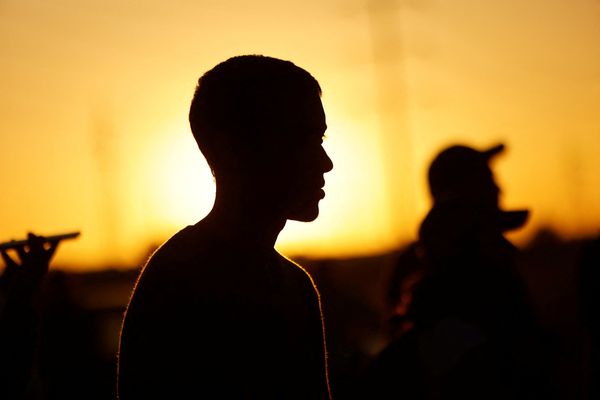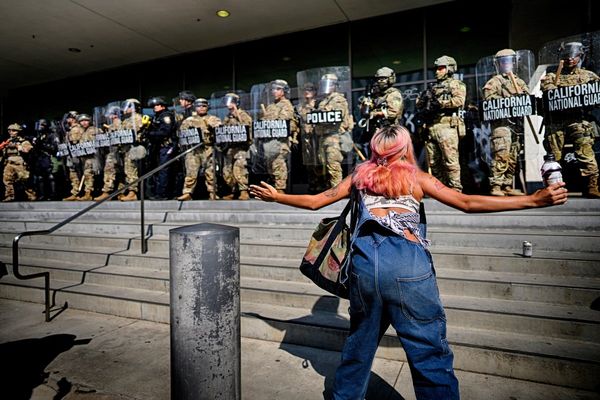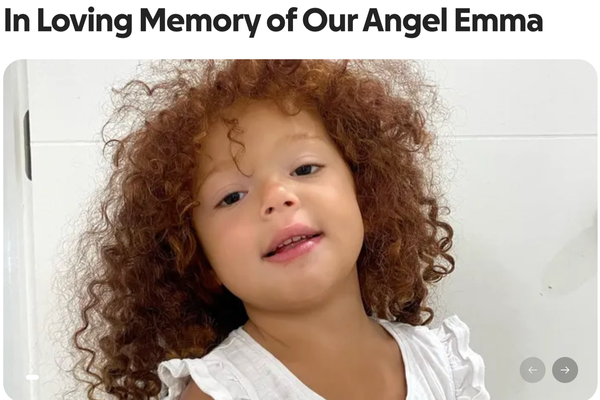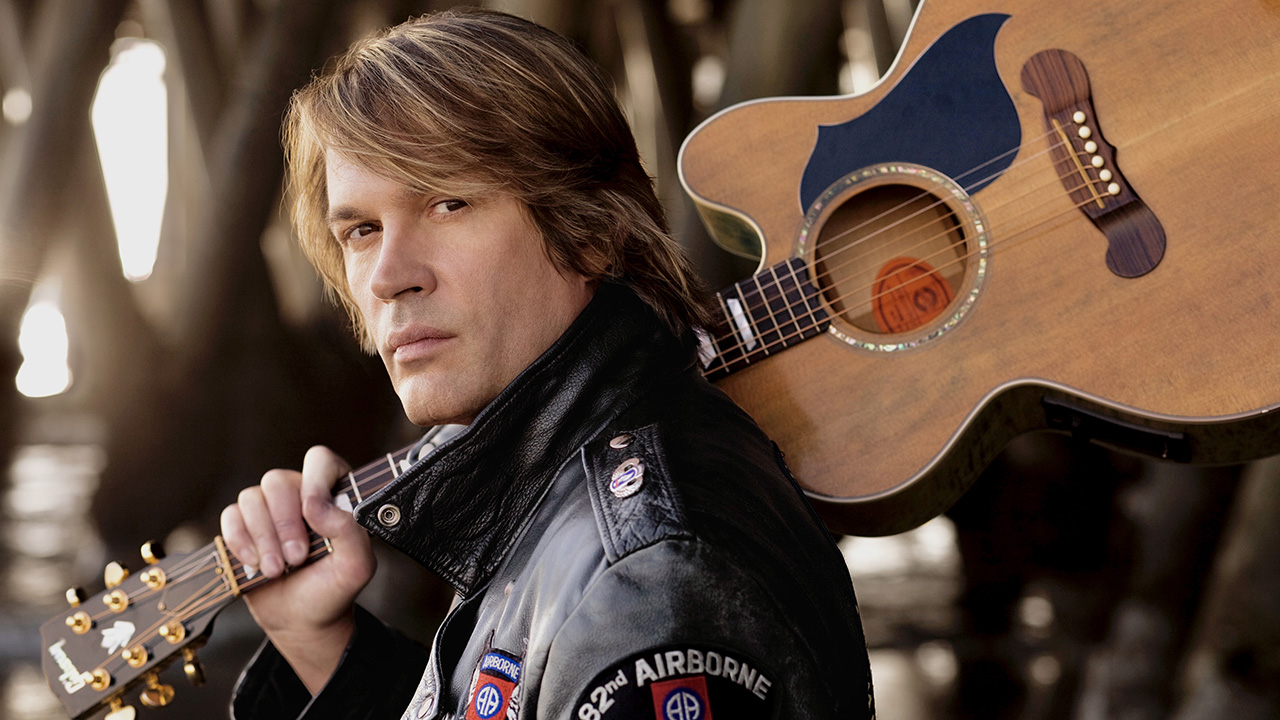
Rockie Lynne wasn’t discovered until he was 39. “A famous music attorney once told me, ‘You’re just too stupid to quit.’” he says. “He may have been right. I’ve always been a late bloomer.”
The country star's drive comes via an early love for rock music and a curiosity for jazz. “Frank Gambale and Scott Henderson were doing things on guitar I could only dream about,” he says. “It was like the first time I heard rock – I didn’t understand it, but I wanted to learn everything I could about it.”
He spent time in the US Army and years banging around Nashville before scoring a deal with Universal Music. “I firmly believe you should never give up five minutes before a miracle happens,” he says. “It’s a powerful spiritual practice for artists to focus on just the art, not the outcome. That kind of focus encourages me every day.”
Six albums and multiple world tours in, and after being the subject of the documentary Where I Belong, Lynne’s focus remains the same. “I want to become a better songwriter. I’m forever grateful that I’ve been able to do something for a living that I would have gladly done for free. It’s not an easy life; there is no clear path. But it’s all I want to do – I’m living the dream.”
What sparked your interest in the guitar?
“A man came to the orphanage where I lived and played for us kids. He sang and played traditional folk songs in a thumb-picking style, and I was hooked. I began to dream about having a guitar, and soon it was all I could think about.
“Later I was able to purchase a Stratocaster-style guitar from the JC Penney catalog. That guitar was manufactured at the now-famous Matsumoku factory in Japan, and it’s genuinely a work of art. I paid $99, and it came with a case. I still have it and i use it on recording sessions today.”
How did the area you grew up in impact you musically?
“When I was a teenager in high school, I played in bands with grown men who were twice my age. We played bars, Elks clubs, VFW and such. Back then, kids usually worked at burger joints or the mall, but my first job was playing in a band, for money.
“The guys I played with were much better musicians than I was, and I learned a lot from them. To this day, I still try to surround myself with better musicians than myself.”
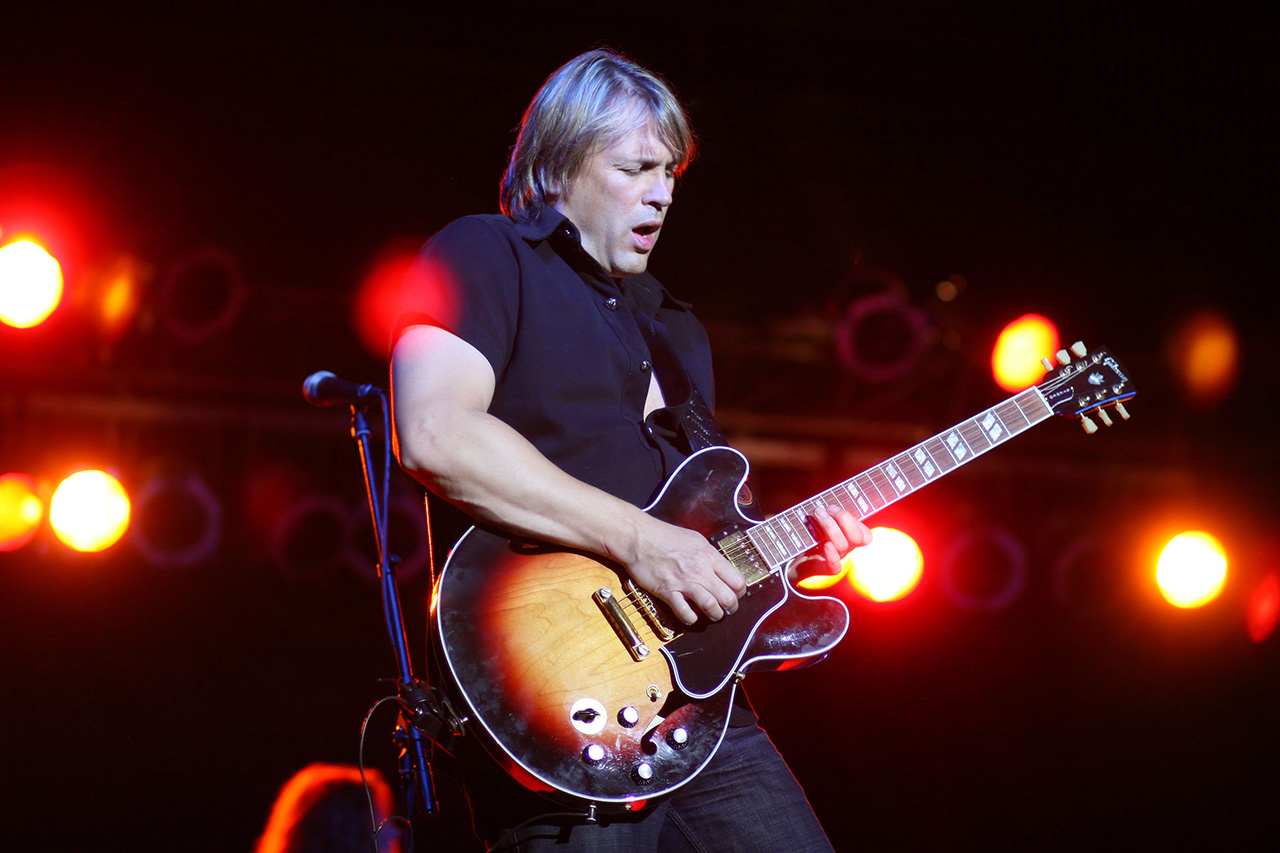
How did joining the US Army shape your guitar journey?
“I volunteered to work in the library during high school, and I was the first to get my hands on the latest issue of Guitar World and other music magazines when they came in.
“One of the prominent sponsors in Guitar World at the time was the Musicians’ Institute in Hollywood. As a poor kid living on a dirt road, I thought attending that school was completely unattainable – until I learned that the military had an education fund. So I joined the military at 18 to go to the Musicians’ Institute.
“That time matured me, taught me discipline and respect for my fellow humans, and became an integral part of my life and career.”
How did you end up working as a backing musician for Merle Haggard’s son, Noel?
“After California, I moved to Nashville and began playing in Printer’s Alley for tips. It was an incredible time in Music City – all the great musicians and artists would come down to Lower Broadway after their performances at the Grand Ole Opry and sit in with the bands.
“I ended up being the bandleader at the world-famous Barbara’s. That was where I met and started playing with Noel Haggard. The first time we played together, he started with Make-Up and Faded Blue Jeans, and I stood there, mesmerized by his raw talent. He looked and sounded so much like his father. It was an honor to play those songs and befriend such a wonderful soul.”
Your discovery came later in life. What led to that?
“After working as a sideman for some really cool artists, I wanted to play my own music, so I put together a kick-ass band and started doing the nightclub circuit, performing my own material.
“We built an intense following in the Midwest, and I was living in the Minneapolis area, where the music scene was vibrant and original. We played about 200 shows a year and sold enough records and merch to get by. It was a wonderful time in my life.
I think TikTok and YouTube have been insanely instrumental in leveling the playing field and taking away some of the gatekeepers’ power
“One night in a bar in New Prague, MN, a record executive heard us; and next thing I knew, I was being flown to New York for a meeting with Doug Morris, the head of Universal Music worldwide. He signed me on the spot.
“The legendary producer, Tony Brown, did my debut album. Then I was on a bus with my band, opening for Carrie Underwood on her first North American tour and visiting radio stations across the country.”
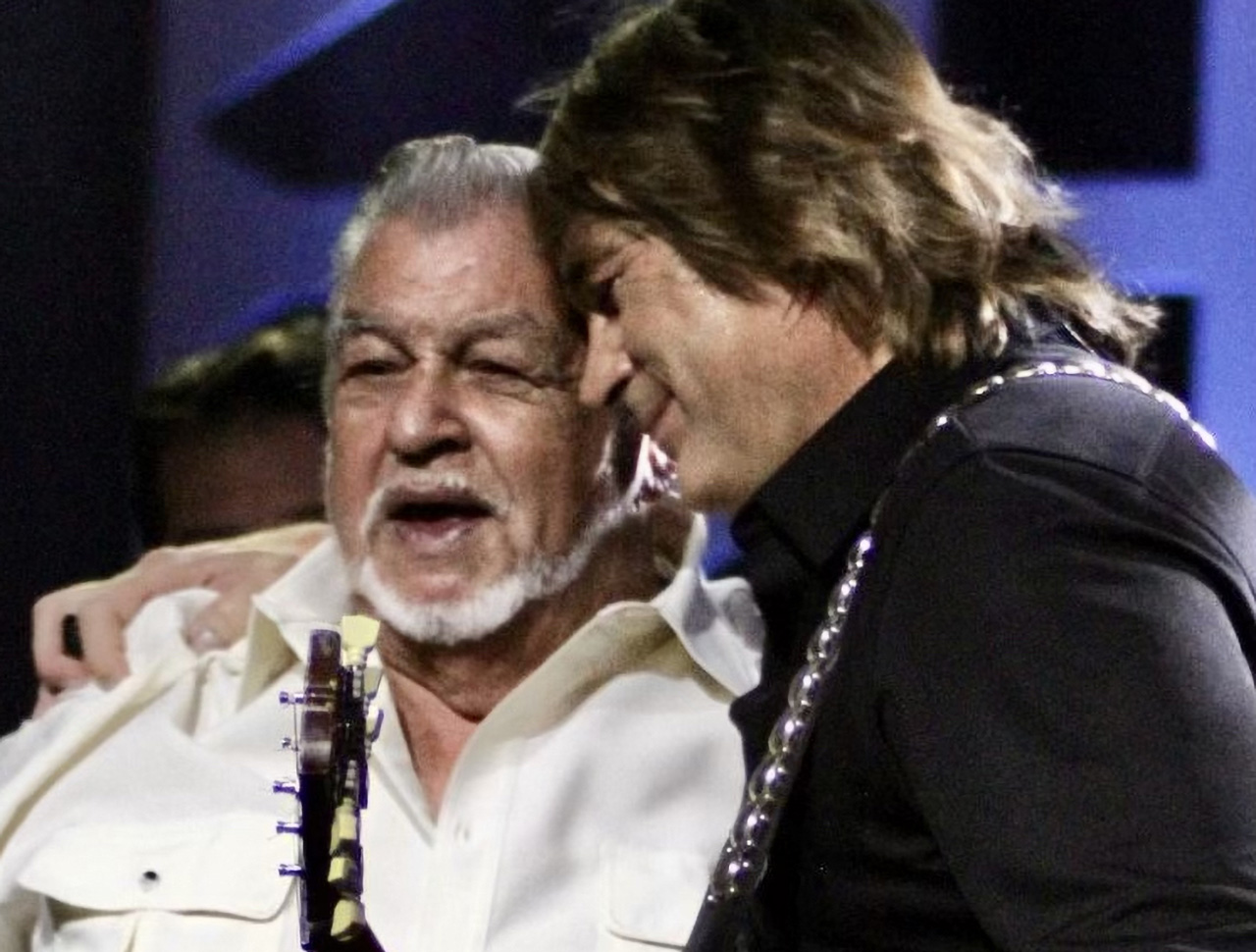
What’s the story behind the Martin D-35 that your father gave you? Is that your most important piece of gear?
“I was abandoned as an infant and I didn’t know who my parents were. I met my biological father as an adult through a DNA test. I was surprised to find that he’d been infatuated with the guitar his entire life as well.
“He was a truck driver who sang every weekend with his band around the Southeast. His prized possession was a 1972 D-35; shortly before he passed away, he gave it to me. I wrote My Father’s Guitar in his honor. It is indeed my most important piece of gear.’”
How has your rig evolved through your career?
“My first ‘professional’ rig was a Mesa Boogie Mark III with an assortment of guitars depending on the situation. For traditional country gigs I would use a Tele and for pop and new country – which is now old country – and I had a Strat for rock and metal gigs. But I usually used a Les Paul and the amp was always the Mark III. That amp traveled the world with me.
“When I got a record deal, Universal offered to buy me a new setup. I worked with Randy Gabbard at Tour Supply in Nashville to clone the best rig I had ever heard, which happened to be Peter Frampton’s touring rig.
“I heard him rehearsing at a place called Soundcheck in Nashville. His tech told me Randy had built the rig for Peter. It was a complicated setup with multiple hand-wired preamps, tube power amps, effects and a vintage pedal assortment into MIDI switchers, feeding a pair of Marshall 4x12’s with 35-watt greenbacks.”
What’s the story behind your custom line of guitars?
“It’s something we’ve been working on for a while now. Our end goal is to increase the natural sustain of an electric guitar. Our bodies are one piece of hardwood – no chambers, no pines. It’s heavy; suck it up: if you want sustain, it’s gonna take some wood.
“Our finishes use no paint, urethanes or shellacs, which seal the wood and reduce vibration, and don’t allow the sound to breathe. We use leather dyes and Tru Oil that soak into the wood rather than seal it. The beautiful gloss finish is obtained by many, many, many coats of Tru oil and wet sanding with 24 hours between applications. It’s not uncommon for our finishes to take three months to cure.
“That type of attention to detail is not possible in a high-volume operation at the big guitar companies. The sustain in these bodies is noticeably increased. The pickups and hardware are arranged to the client’s desire, and our master luthier, Chuck McNeil, oversees every detail of the build.”
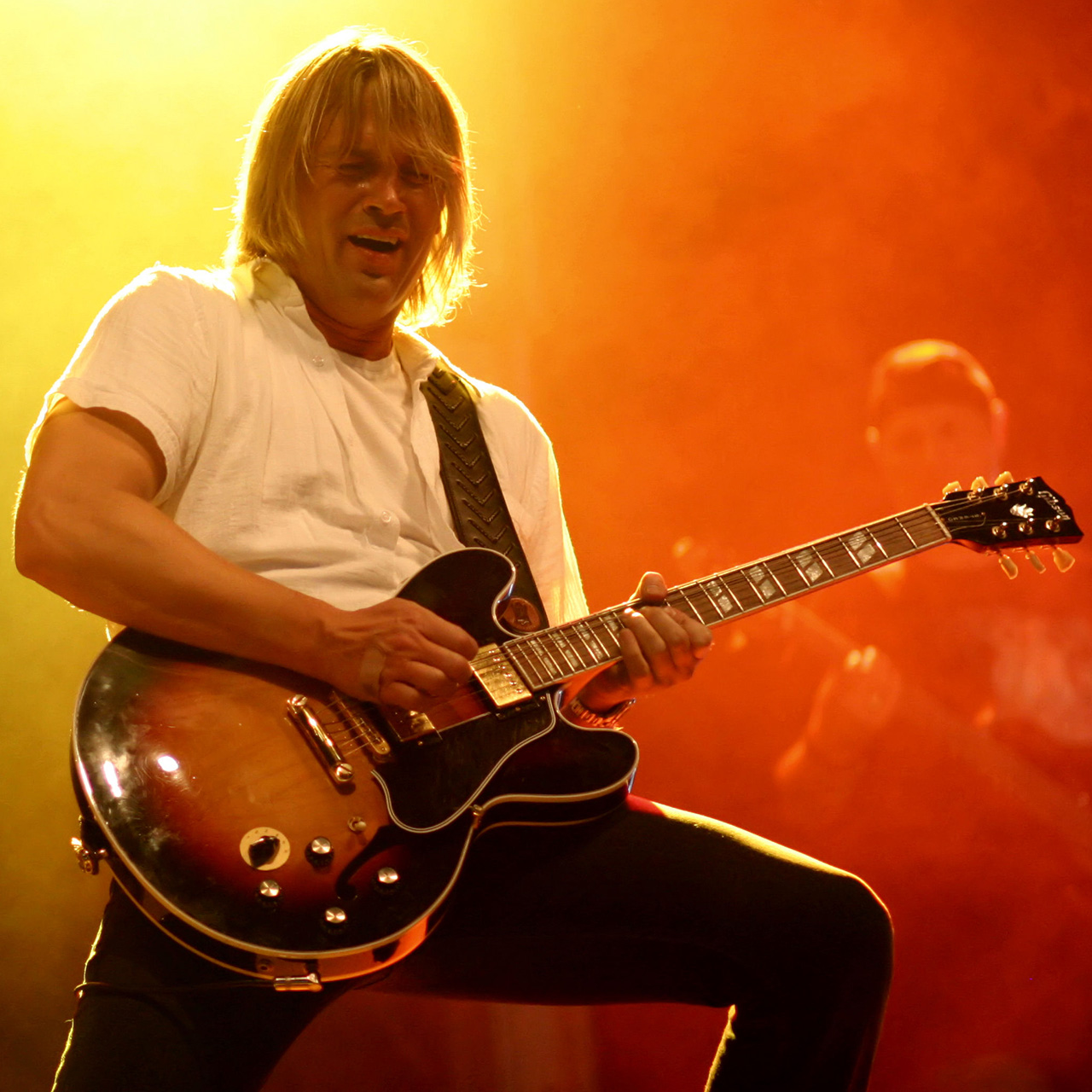
What does your late discovery say about the music business?
“Like much of America these days, ‘Who’s your Daddy?’ and how much money you have can greatly impact your ability to succeed. There’s no real income from streaming.
I’m a lifelong motorcyclist, and the credo for young riders translates perfectly into advice for a musician’s career – it’s your journey. You are not competing against anyone. Go where your road takes you
“David Gilmour commented recently in Guitar World that the lack of compensation from streaming gives very little incentive for musicians to write and record original music. I believe that’s why we see so many tribute bands.
“But there have always been obstacles to creating art. Obstacles can’t stop the creative spirit. It’s like a weed – cover a weed with concrete and it’ll eventually pop out of the cracks.
“I think there are cliques of people who pull the levers; people who deem who is ‘cool’ and who is not, especially in the Americana world. But I think TikTok and YouTube have been insanely instrumental in leveling the playing field and taking away some of the gatekeepers’ power.”
What’s your best advice for young guitar players?
“I’m a lifelong motorcyclist, and the credo for young riders translates perfectly into advice for a musician’s career – it’s your journey. You are not competing against anyone. Go where your road takes you. Be you. Believe in yourself. Ride your own ride. And always focus on the art, not the outcome. Use your gift to the best of your ability and let it take you where it will.”
What’s your greatest regret, and where do you go from here?
“I wish I had practiced more. I will practice more!”
- Catch Rockie Lynne on tour during the summer.
- Rockie Lynne documentary Where I Belong is streaming now on Prime.



